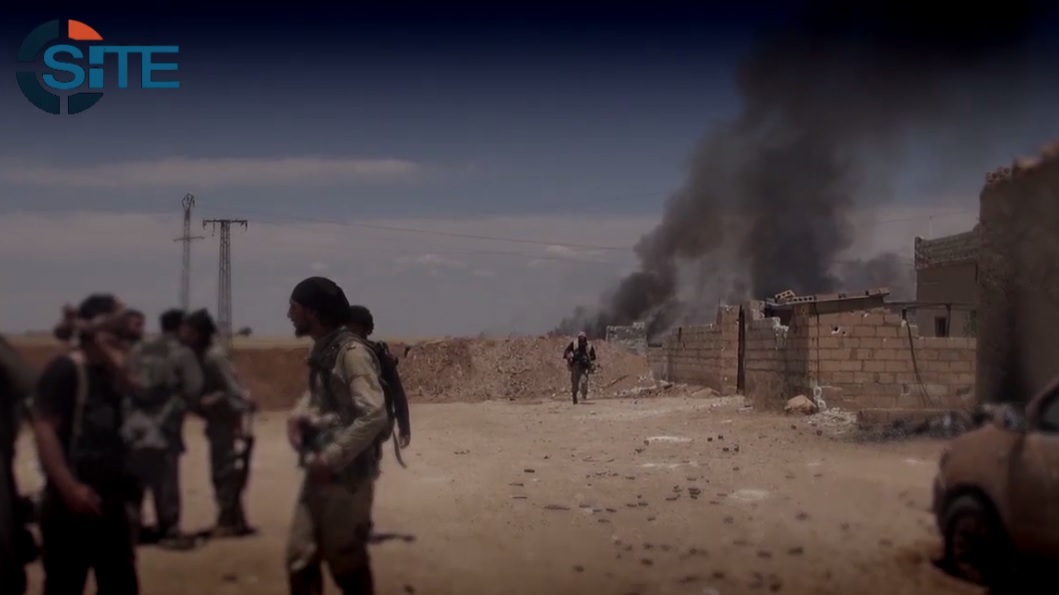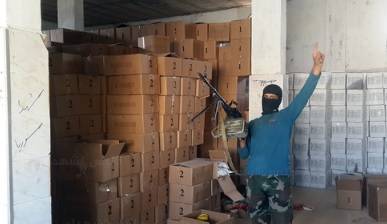U.S. Strategy against the Islamic State and Nusra Front: A Reconsideration

The decision by the U.S. government to double the number of American forces in Iraq suggests that the current strategy against the extremists is not working. The U.S. has carried out numerous airstrikes and is lending support to the Kurds, moderate Syrian rebels, the Iraqi government, and anti-Islamic State (IS) tribal forces, but this has not stopped IS or al-Qaeda’s (AQ) affiliate Jabhat al-Nusra (JN or al-Nusra Front), helped the situation in Syria or Iraq, or ended the threat to the homeland. The persistence of these challenges in the face of U.S. action might require a reconsideration of the level of effort necessary to prevent further atrocities and stop the extremists.
The latest offensives by IS and al-Nusra Front show the depth of the problem facing the U.S. In Iraq’s Anbar province, IS was able to push out security forces to take the city of Hit last month. This was part of a series of setbacks by the Iraqis throughout the province, although Hit was the only large city to fall entirely to the extremists. Immediately afterward, there were multiple reports of atrocities carried out against the inhabitants of Hit, making this one of the few Sunni Muslim areas in Iraq to suffer this fate at the hands of the IS. Descriptions of the massacres make it clear that it was not just combatant members of the Sahwa (or Awakening) that were executed; hundreds of men, women, children, and the elderly were blindfolded and shot in Hit’s public square. These atrocities might explain why nearly 200,000 people fled the city in mid-October.
In answer to reporters’ questions about the massacres in Hit, IS soldiers said that anyone who resisted the “Caliphate” deserved death. This brazen public declaration, as well as the fact that official media arms for the group continue to publish pictures of these sorts of atrocities and that the group put out a glossy magazine in English giving the legal basis for enslaving conquered peoples is telling. It suggests that IS believes not only that members are fully justified in indiscriminately slaughtering unarmed civilians and enslaving the populace, but that they will suffer no consequences for their crimes.
 Al-Nusra Front, meanwhile, has taken much of the province of Idlib from the moderate Syrian opposition. The AQ affiliate defeated one U.S.-supported rebel group, the Syria Revolutionaries Front (SRF), entirely while another, Harakat Hazm, turned over its bases and supplies to them. Photos have surfaced showing al-Nusra Front fighters with U.S. supplied arms, including sophisticated anti-tank weapons, taken from the Syrian opposition. Reports that al-Nusra Front was joined by IS in this offensive are worrisome, since this would lend further support to fears that the two extremist groups have been cooperating with each other rather than competing. As I argued in an earlier post, if the two groups are able to put their grudges behind them and unify over hatred of the U.S., they could pose the greatest terrorist threat in American history.
Al-Nusra Front, meanwhile, has taken much of the province of Idlib from the moderate Syrian opposition. The AQ affiliate defeated one U.S.-supported rebel group, the Syria Revolutionaries Front (SRF), entirely while another, Harakat Hazm, turned over its bases and supplies to them. Photos have surfaced showing al-Nusra Front fighters with U.S. supplied arms, including sophisticated anti-tank weapons, taken from the Syrian opposition. Reports that al-Nusra Front was joined by IS in this offensive are worrisome, since this would lend further support to fears that the two extremist groups have been cooperating with each other rather than competing. As I argued in an earlier post, if the two groups are able to put their grudges behind them and unify over hatred of the U.S., they could pose the greatest terrorist threat in American history.
This potential for a threat to the U.S. makes reports about militants in Lebanon all the more troubling. There have been persistent news stories about IS and al-Nusra Front fighters spreading the Syrian conflict into Lebanon. In late October, fighters from either IS or al-Nusra Front (or both) carried out a sustained four-day battle against Lebanese army troops in Tripoli, the second largest city in Lebanon. Some observers say that IS had intended to declare an “emirate” in the area, and when opposed by the Lebanese army, al-Nusra Front came to the aid of IS units. Both before and after this battle, there have been multiple reports of Lebanese soldiers defecting to the militants, as well as reports of widespread support for both IS and al-Nusra Front among the local Sunni population. None of this bodes well for the future stability of Lebanon, or for the possibility of a disastrous reconciliation between the two extremist groups.
 There is another threat emanating from Syria other than IS and the Nusra Front, one that could present a serious danger to the homeland. In late October, assessments surfaced that the Khurasan Group had survived American attempts during September to disrupt it. The group consists of high-level AQ members who were said to pose an “imminent threat” to the U.S. and were therefore targeted along with IS. To deal with the serious danger presented by the group, the U.S. carried out a second series of airstrikes just weeks ago against key members, including David Drugeon, a French convert to radical Islam who was involved in AQ’s bomb-making efforts. The U.S. also apparently targeted for the first time the al-Nusra Front and Ahrar al-Sham (AAS)—a militant group that was once promoted as a potential recipient of U.S. aid in the fight with Assad. While it is too early to say whether these strikes have had any effect, the fact that the U.S. has been compelled to renew attempts to destroy the Khurasan Group and broaden the groups targeted suggests that this problem has grown rather than diminished.
There is another threat emanating from Syria other than IS and the Nusra Front, one that could present a serious danger to the homeland. In late October, assessments surfaced that the Khurasan Group had survived American attempts during September to disrupt it. The group consists of high-level AQ members who were said to pose an “imminent threat” to the U.S. and were therefore targeted along with IS. To deal with the serious danger presented by the group, the U.S. carried out a second series of airstrikes just weeks ago against key members, including David Drugeon, a French convert to radical Islam who was involved in AQ’s bomb-making efforts. The U.S. also apparently targeted for the first time the al-Nusra Front and Ahrar al-Sham (AAS)—a militant group that was once promoted as a potential recipient of U.S. aid in the fight with Assad. While it is too early to say whether these strikes have had any effect, the fact that the U.S. has been compelled to renew attempts to destroy the Khurasan Group and broaden the groups targeted suggests that this problem has grown rather than diminished.
This could be said, in fact, of every one of the issues discussed here. Although the U.S. has attempted to stop atrocities, disrupt the militants, and prevent any threat to the homeland, our efforts so far have proven ineffective. The terrible actions of IS in places like Hit, the expansion of Jabhat al-Nusra and IS into Lebanon, and the resilience of the Khurasan Group in the face of American airstrikes might push the U.S. into a deeper commitment in Syria and Iraq, and perhaps even the use of ground forces, despite the earnest desires of the Obama administration to avoid any escalation.
